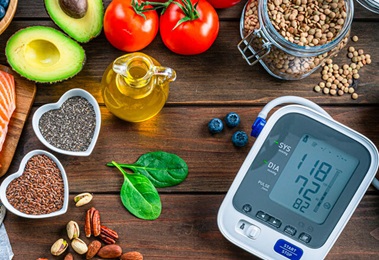Heart-Healthy Eating on a Budget
It’s a myth that eating healthy has to cost big bucks. “You can spend much the same as you do now and wind up with a heart-healthier diet,” says Kerry Stewart, Ed.D., professor of medicine in the cardiology division at Johns Hopkins and director of Clinical and Research Physiology. It comes down to making smarter choices. Here are some ideas for eating better without spending more.

Compare labels.
“From a health perspective certain foods are less desirable than others at a similar price,” Stewart says. For example, different varieties of milk cost roughly the same, but skim milk and 1 percent milk provide less saturated fat than 2 percent milk or whole milk. The same is true with yogurt. Some yogurts, although labeled “low fat,” are high in calories and sugar, he says, so by comparing the Nutrition Facts data on the labels, you can make a healthier choice that’s low in both fat and sugar without spending more.
Skip processed foods in boxes and bags.
Whole foods tend to cost less than processed varieties, while sparing you the added sodium and sugar that can lead to weight gain, diabetes and heart damage, according to Stewart.
Be aisle-smart.
Shop mostly from the outer aisles of your market. That’s where fresh
fruits, vegetables, dairy, fish and meat tend to be displayed.
In the middle aisles, look for heart-healthy canned tuna, salmon and
sardines; frozen unprocessed fish fillets; and dried or canned beans (rinse
them before you cook to lower sodium content). Add beans to meat dishes so
you won’t need as much meat—this simple step will lower the cost and your
saturated fat intake.
Look down too: Often the priciest items are shelved at eye level, while
cheaper store brands are placed lower.
Pick what’s in season.
When produce is plentiful, it tends to cost less, Stewart says. So corn is a better buy in summer, while apples are a bargain in fall and winter, for example. The United States Department of Agriculture provides a season-by-season list of fruits and vegetables.
Consider canned or frozen produce and beans.
Stewart says they can pack as many nutrients as fresh produce, and at a good price. Look for “low sodium” or “no salt added” on the label.
Don’t shop when you’re hungry.
You’ll be less tempted by junk food and impulse buys—like those fragrant bakery items and the handy snacks at the cash register.
Cook more meals at home.
Johns Hopkins research shows that people who cook meals at home eat healthier and consume fewer calories than those who cook less often.
What the Experts Do Skip Organics?
In your quest to eat healthy foods, it will become clear that organic foods can cost prohibitively more than nonorganics. If you are able, prioritize organic purchases to include those with skin being consumed — for example, spinach, berries and apples, says dietitian Kathleen Johnson. But what’s most important is that you consume lots of fruits and vegetables, period.






